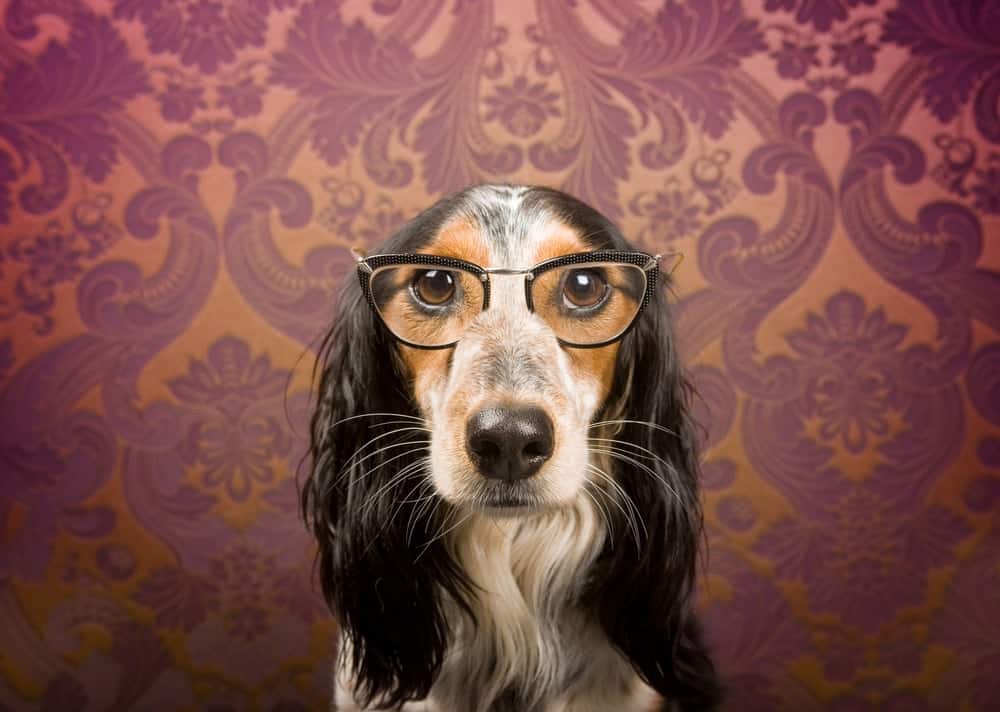3 Ways to Keep Your Dog Mentally Sharp
We’re all aware of the importance of physical exercise for the health and wellness of our furriest family members. But, did you know mental exercise is equally important?
That’s right! In addition to helping wear off some of your dog’s seemingly endless energy, games and exercises that cause your dog to think, focus, and problem solve are excellent for stamping out boredom, building confidence, and keeping your pup mentally sharp!
Mental exercises don’t have to be overly complex or complicated to benefit your dog, either. Any game or activity that requires your dog to focus or to solve problems will work.
Here are 3 fun and easy games to play at home to keep your dog entertained, exercised, and smart as a whip!
1. Hide-n-Seek
Hide and seek can be played any number of ways, all using the same principle concept of hiding something and asking your dog to find it – you can even hide yourself! Hide and seek games can be played for just a few minutes every day and can be altered every time to keep it fun and interesting for your dog.
If you play hide and seek using yourself as the hidden treat, start by asking your dog to sit and stay. Then, without him following you, hide behind a chair, in another room, or just out of his sight. Call out to your dog with a cue, like “Come find me!” Then, reward handsomely with lots of attention, praise, and treats when your dog comes to find you. Build up to more challenging hiding spots, like inside the bathtub, to keep the game interesting and to build on your dog’s problem solving skills.
BONUS! When played often, and when your dog is continually rewarded for coming to you, your “come find me” cue can be used as an emergency recall if your furriest family member ever gets loose!
Another variation – one that will work your dog’s natural sense of smell – is to hide a favorite treat or toy and ask your dog to find it. This variation of the game will need to be taught, so start off very easy, “hiding” the treat or toy within sight of your dog, then working slowly toward more difficult hides. Always use a cue, like “go find it!” to let your dog know it’s time to play. And, reward very handsomely when he finds it!
2. Food & Treat Puzzles
Food and treat puzzles are PAW-some for exercising your dog’s brain! Not only do they require your dog to problem solve, they’re also great for slowing down dogs that tend to eat too fast. Best of all, these types of brain games offer an instant and immediate reward for your dog’s effort, reinforcing the behavior and making it easier for them to learn and advance in their puzzle skills.
Food and treat puzzles encourage your dog to put forth effort to reach or access a delicious reward. From very simple puzzles, like a Kong toy stuffed with peanut butter, to more advanced puzzles that involve moving pieces and lifting flaps, these games can be used several times a day as a reward, or during meal times to slow down dogs that scarf their dinner too quickly.
While there are a ton of amazing food and treat puzzles available, it’s easy to build your own puzzle games at home, too. A muffin pan filled with food or treats and topped with tennis balls, or an empty 2-liter bottle with small bite-sized treats inside are just two examples of D.I.Y puzzle treats – get creative!
3. Obedience & Trick Training
Time spent teaching and training your dog is so much more valuable than just having an obedient dog. This one-on-one time builds your dog’s confidence, strengthens your bond, and enhances your ability to communicate with one another. And, it’s a fantastic way to keep your pup mentally sharp, too!
Once your dog has mastered the basics – sit, stay, down, come, work on more advanced skills and tricks! Consult a trick training book for plenty of new and fun ideas, like playing dead, putting toys away in the toy box, shutting doors, and turning off lights – the possibilities are endless and your dog is ready, willing, and eager to learn!
BONUS! Combine physical and mental exercise by strapping on a treat pouch and heading out for a walk. Every so often, stop walking and practice some cues, like sit, lay down, shake, etc. Not only are you working your dog’s brain during these mini training breaks, you’re teaching him that it’s important to listen to cues even with all sorts of distractions going on around you.
How do YOU keep your dog’s brain exercised and mentally sharp? Share your ideas in a comment below!





canadian pharmacy near me https://canadianpharmacy.pro/# – canadian pharmacy ed medications canadianpharmacy.pro